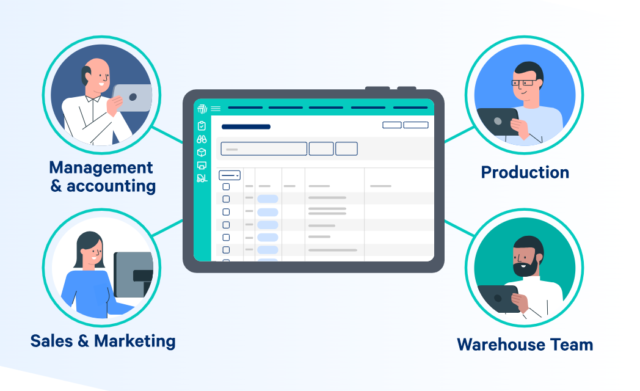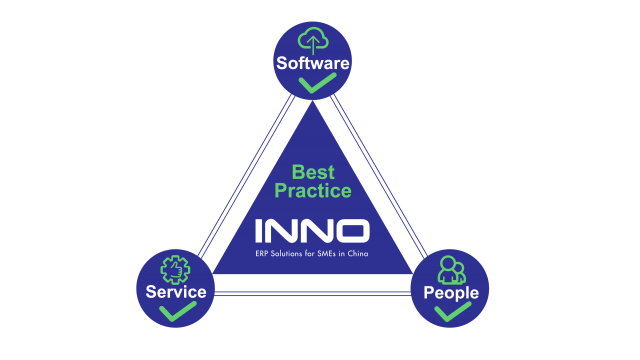Let’s face it, inventory management is complex. Tracking all costs from procurement to distribution is not a small task. It’s okay to start small with an Excel spreadsheet, but as your inventory management needs to grow and change, it’s important to assess whether it’s time to adopt a more robust inventory management system that will sync with your accounting and operations systems.
The good news is that inventory management doesn’t have to be hard. Employing an inventory management system like Cin7 Core will offer the insight and efficiency needed to make informed decisions and drive growth.
Here are eight common signs, which you need to up your game and invest in an inventory management system:
One – Lack of Clarity Around Frequent Inventory Adjustments
If you’re in the manufacturing space and have raw materials and/or employ labor to create finished goods to sell, you’re officially at a complex level of inventory management. The calculation of all of the various inputs involved in understanding each piece of the process will be eased by having a system in place.
If you are experiencing significant discrepancies between the inventory value on your financials and what your physical counts are displaying, an inventory management system can help provide insight into which SKU or locations are causing these discrepancies.
Two – Changing From In-House to Co-Pack, or Co-Pack to Turn-Key
When you get to know your trusty process, it is time to make a change. With a change in manufacturing support, setup can come a host of adjustments. All of which can affect your COGS and bottom line. Don’t let small changes snowball into big money consequences. Get ahead of your new partnership and/or manufacturing format by implementing an inventory management system.
Three – Expansion of Inventory Locations
For a company that pulls inventory and sells from a number of different locations, an inventory system will help you translate the details across each location. If you have multiple 3PLs (third-party logistics) at play, having more accurate tracking of the costs behind each in a clear view will help determine the best and most profitable locations to house your inventory.
Four – You Are Planning to Grow at a High Rate in the Near or Mid Future
For help with ordering and being able to stay ahead of the business needs, an inventory system will clearly show you where you stand on counts and status. This beats manually going through your data to figure out if it makes sense to reorder now, later, or whether or not you are equipped to fulfill a large order in the works.
Five – You Need More Detailed Reports: Profitability by SKU, Reorder Points, etc.
Sometimes the classic report from your spreadsheets, Shopify, or Quickbooks just doesn’t cut it. You will need something more precise to pull from. Especially when you need an understanding of your Inventory velocity–the amount of turn on a week-over-week basis. Having better reporting means better decision-making.
Side Note: Like the other systems we recommend and use, DEAR/Cin7 Core is cloud-based, integrates nicely with other systems like Shopify, Amazon, Faire, and syncs with accounting and fulfillment systems to pull data through each seamlessly. For example, the business hosted by Shopify, shipping through ShipStation, and accounting with Quickbooks, is all set. You’ll see sales orders, understand shipments, and more; all in one spot and without entering the same data twice.

Six – You Need to Include More in Your Landed Cost
Do you import raw materials and/or products from overseas? Maybe duties factor into your COGS. What about the fluctuation in the exchange rate? There are already complexities popping up and we only touched on two items: freight-in and duties. For companies with more complexities in areas like landed costs (freight-in costs, labor, etc.), it is best to perform on the precise side, when it comes to the costs of goods sold. From a margins or general assessment standpoint, you may need to dig into the weeds a bit more.
An inventory system like Cin7 Core will allow better visibility over all of these functions. From purchasing to selling and seeing the segregation of duties within each.
Seven – You Have Frequent Variances in Raw Material Cost/ Purchase Price
Remember that fluctuating exchange rate concept we just mentioned? Raw goods costs can fluctuate based on a number of factors, and cause subtle, yet significant changes to your margins if not tracked properly over time. We see this a lot in CPG companies that source ingredients from their suppliers. Many of these ingredients are reliant upon market conditions, weather, you name it. They need access to the costs and fluctuations so they can make adjustments to pricing and/or seek out alternative suppliers.
Eight – You Need Access to Real-Time Data Now, Not Monthly
Up-to-date data can be the difference between making a profitable choice and paying for a guess later. Cin7 Core provides up-to-date data that you can access immediately and make decisions from. No more waiting to update a bulky spreadsheet or pulling a monthly report. Since it syncs with all of your popular systems like Quickbooks and Shopify, you will have all of your sales data at hand too.
If some or all of these areas spoke to you, it is time to do a bit more research into which inventory management system can support your needs. At the end of the day, there are no awards for managing the most detailed, complex spreadsheets. Filter that time and energy into updating your data within a more accurate and user-friendly option like Cin7 Core, and get back to moving those products and making sales.
This article was originally posted at Cin7.
Introduction of INNO
We are a supplier specializing in the efficient delivery of ERP systems for small or medium-sized enterprises. In addition to the local Kingdee software, we have introduced a very easy-to-use cloud ERP system from America – Cin7 Core. The most substantial features of this system are:
- Easy to use
- Low cost of learning
- Short on-line cycle
- Full-featured
- Chinese and English bilingual function
- Cloud deployment
This has brought prerequisites for the firm’s finances to use this system proficiently as well. We are the leading implementation partner of Cin7 Core, based in Shanghai, China. For details, refer to INNO China – Cin7 Expert Directory.
“70% of Cin7 Core implementations have the business run in less than three weeks compared to an average of 7 months for ERP implementations.”
Jano Tse – the founder of INNO
Jano Tse has 14 years of experience in implementing ERP systems for foreign and local companies. He also specializes in the accounting processes in China’s business environment. Jano’s passion for disciplined delivery and methods for meeting goals on time and under budget is exactly what INNO brings to each of the clients.
Right Software | Right Service | Right People 

